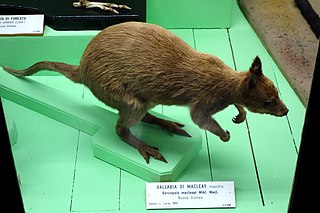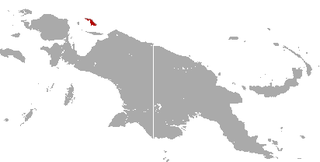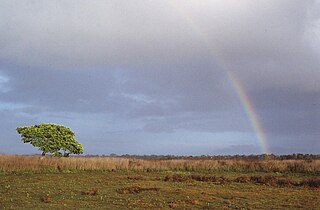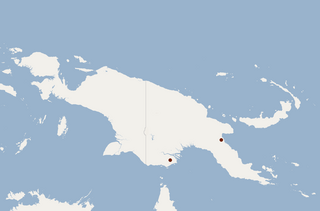
Papua, formerly Irian Jaya, is the largest and easternmost province of Indonesia, comprising most of Western New Guinea. The province is located on the island of New Guinea. It is bordered by the state of Papua New Guinea to the east, the province of West Papua to the west, the Pacific Ocean to the north, and the Arafura Sea to the south. The province also shares maritime boundaries with Palau to the north. The province is divided into twenty-eight regencies and one city. Its capital and largest city is Jayapura. The province has a large potential in natural resources, such as gold, nickel, petroleum, etc. Puncak Jaya is the province's highest mountain and the highest point in Indonesia. Papua, along with West Papua, has a higher degree of autonomy level compared to other Indonesian provinces.

Papua New Guinea, officially the Independent State of Papua New Guinea, is a country in Oceania that comprises the eastern half of the island of New Guinea and its offshore islands in Melanesia. Its capital, located along its southeastern coast, is Port Moresby. It is the world's third largest island country with an area of 462,840 km2 (178,700 sq mi).

Rattus is a genus of muroid rodents, all typically called rats. However, the term rat can also be applied to rodent species outside of this genus.

The gentoo penguin is a penguin species in the genus Pygoscelis, most closely related to the Adélie penguin and the chinstrap penguin. The earliest scientific description was made in 1781 by Johann Reinhold Forster with a type locality in the Falkland Islands. The species calls in a variety of ways, but the most frequently heard is a loud trumpeting, which the bird emits with its head thrown back.

Huntsman spiders, members of the family Sparassidae, are known by this name because of their speed and mode of hunting. They are also called giant crab spiders because of their size and appearance. Larger species sometimes are referred to as wood spiders, because of their preference for woody places. In southern Africa the genus Palystes are known as rain spiders or lizard-eating spiders. Commonly, they are confused with baboon spiders from the Mygalomorphae infraorder, which are not closely related.

Western New Guinea, also known as Papua, is the western portion of the island of New Guinea controlled by Indonesia since 1962. Since the island is alternatively named as Papua, the region is also called West Papua. Lying to the west of Papua New Guinea, it is the only Indonesian territory situated in Oceania. Considered to be a part of the Australian continent, the territory is mostly in the Southern Hemisphere and includes the Schouten and Raja Ampat archipelagoes. The region is predominantly covered with ancient rainforest where numerous traditional tribes live such as the Dani of the Baliem Valley although a large proportion of the population live in or near coastal areas with the largest city being Jayapura.
The angulate pipistrelle, also known as the New Guinea pipistrelle, is a species of vesper bat found in Papua New Guinea and the Solomon Islands.

The white-striped dorcopsis or greater forest wallaby is a species of marsupial in the family Macropodidae. It is found in the northern part of West Papua, Indonesia and Papua New Guinea. It is a common species in suitable tropical forest habitat and the IUCN lists its conservation status as being of "Least concern".

Macleay's dorcopsis, also known as the Papuan dorcopsis or the Papuan forest wallaby, is a species of marsupial in the family Macropodidae. It is endemic to Papua New Guinea, where its natural habitat is subtropical or tropical dry forests. Being little threatened by habitat destruction, the International Union for Conservation of Nature has rated it as being of "least concern".

The dragon tube-nosed fruit bat is a species of bat in the family Pteropodidae. It is found on both sides of New Guinea: West Papua, Indonesia and Papua New Guinea. It is slightly smaller and very similar in appearance to N. albiventer, differing by having more profuse, dark spotting on its wing membranes, and smaller shorter canines. The similarity between the species has been a source of possible misidentifications. The records of this species from Papua New Guinea are associated with freshwater swamps and rivers.
Bleasdalea papuana is a species of plant in the family Proteaceae. It is found in West Papua in Indonesia and Papua New Guinea. It is threatened by habitat loss.
Helicia polyosmoides is a species of plant in the family Proteaceae. It is endemic to Papua New Guinea. It is threatened by habitat loss. This taxon was described by Don Foreman in 1985.

Yule Island is a small island in Central Province, Papua New Guinea. It is located 160 km NW from Port Moresby, on the south coast of Papua New Guinea.

The continent of Australia, sometimes known in technical contexts by the names Sahul, Australinea, or Meganesia to distinguish it from the country of Australia, consists of the landmasses which sit on Australia's continental plate. The name "Sahul" takes its name from the Sahul Shelf, which is part of the continental shelf of the Australian continent. The continent includes mainland Australia, Tasmania, and the island of New Guinea. Situated in the geographical region of Oceania, Australia is the smallest of the seven traditional continents.

New Guinea is the world's second-largest island, and with an area of 785,753 km2 (303,381 sq mi), the largest island in the Southern Hemisphere. Located in Melanesia in the southwestern Pacific Ocean, it is separated by the 150 km wide Torres Strait from the Australian continent. Numerous smaller islands are located to the west and east. The eastern half of the island is the major land mass of the independent state of Papua New Guinea. The western half, known as Western New Guinea or West Papua, forms a part of Indonesia and is organized as the provinces of Papua and West Papua.

The Solomon Islands archipelago is an archipelago in the western South Pacific Ocean, located northeast of Australia. The archipelago is in the Melanesia subregion and bioregion of Oceania. It forms the eastern boundary of the Solomon Sea. The archipelago forms much of the territory of Solomon Islands. The main islands are Choiseul, the Shortland Islands, the New Georgia Islands, Santa Isabel, the Russell Islands, the Florida Islands, Tulagi, Malaita, Maramasike, Ulawa, Owaraha, Makira, and Guadalcanal. Bougainville Island is the largest in the archipelago, while it is geographically part of the Solomon Islands archipelago, it is politically an autonomous region of Papua New Guinea. The Solomon Islands, as a nation state, includes isolated low-lying coral atolls and high islands including Sikaiana, Rennell Island, Bellona Island and the Santa Cruz Islands.

The blue-eyed spotted cuscus or Biak spotted cuscus is a species of marsupial in the family Phalangeridae. It is endemic to the islands of Biak and Supiori in the Cenderawasih Bay in West Papua of Indonesia. Only scientifically described in 2004, it appears to be very rare, likely due to hunting and habitat loss, and has consequently been rated as critically endangered by the IUCN. Recent surveys have failed to find any wild individuals. Unlike all other members of the genus Spilocuscus, this relatively small species has distinct pale blue eyes.

The Wasur National Park forms part of the largest wetland in Papua province of Indonesia and has been one of the least disturbed by human activity. The high value of its biodiversity has led to the park being dubbed the "Serengeti of Papua". The vast open wetland, in particular Rawa Biru Lake, attracts a very rich fauna.
Finschia is a genus of three recognised species of large trees, constituting part of the plant family Proteaceae. They grow naturally in New Guinea and its surrounding region, in habitats from luxuriant lowland rainforests to steep highland forests.

The Mount Missim long-eared bat is a species of slit-faced bat found in Papua New Guinea.
















